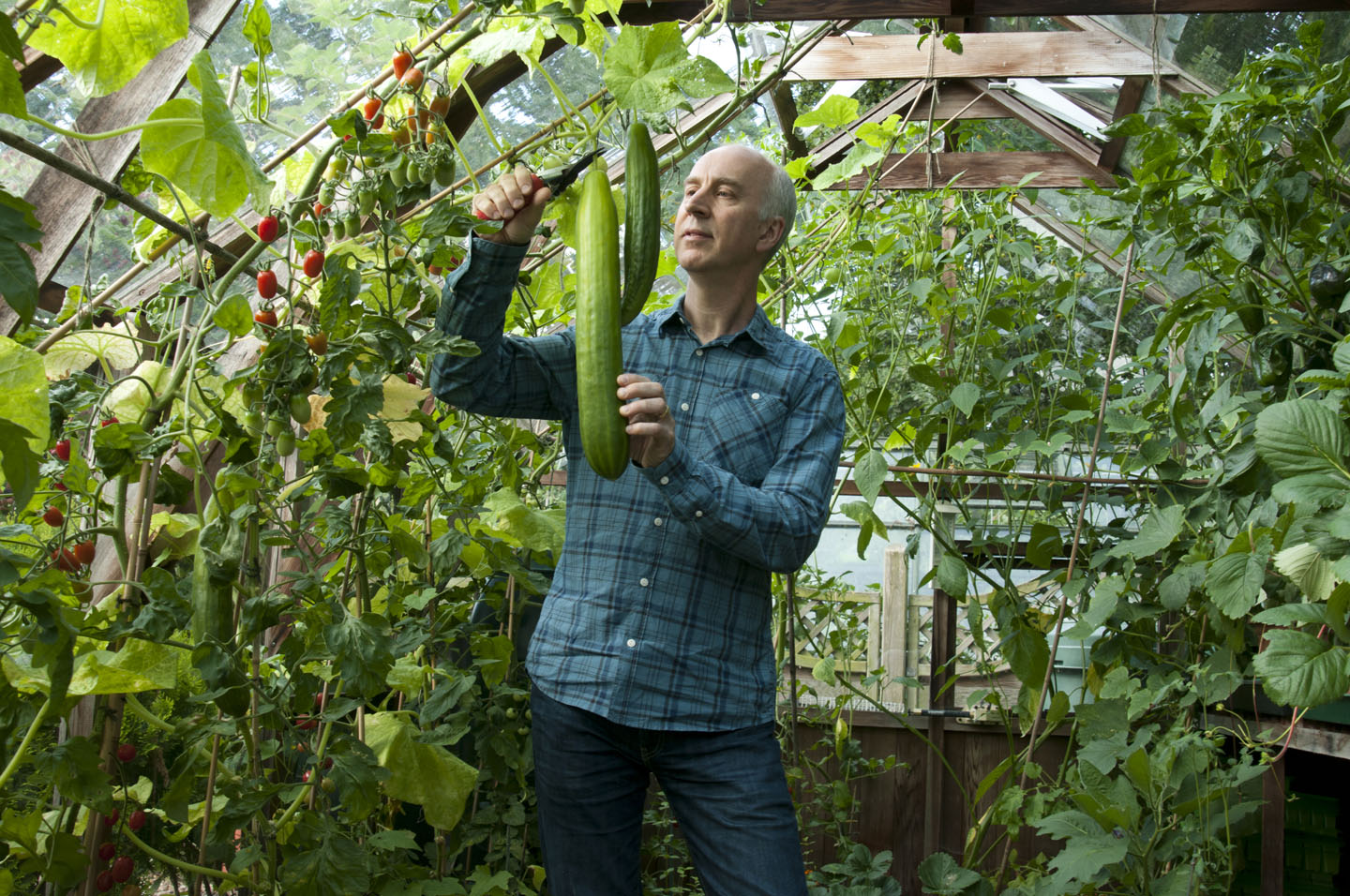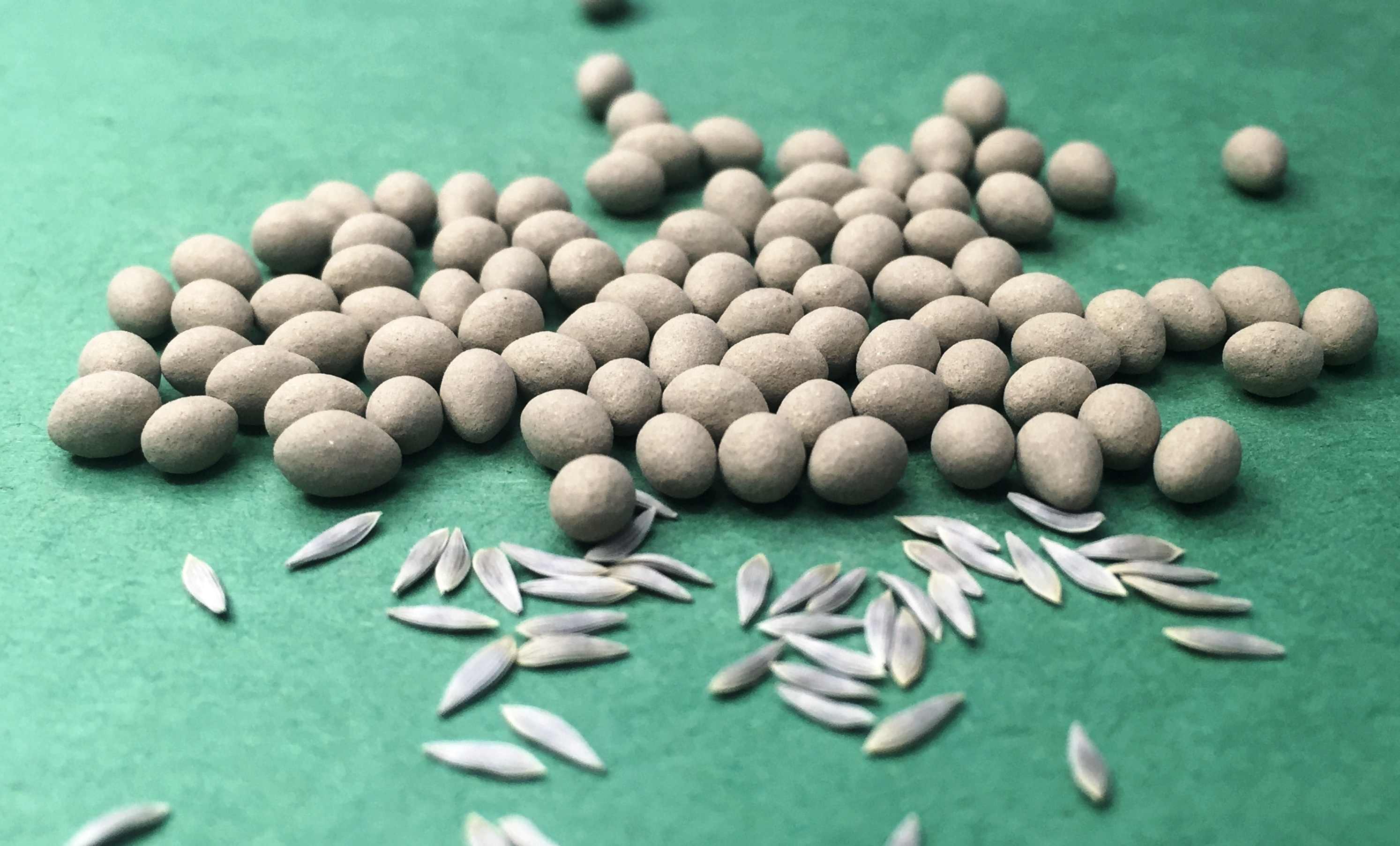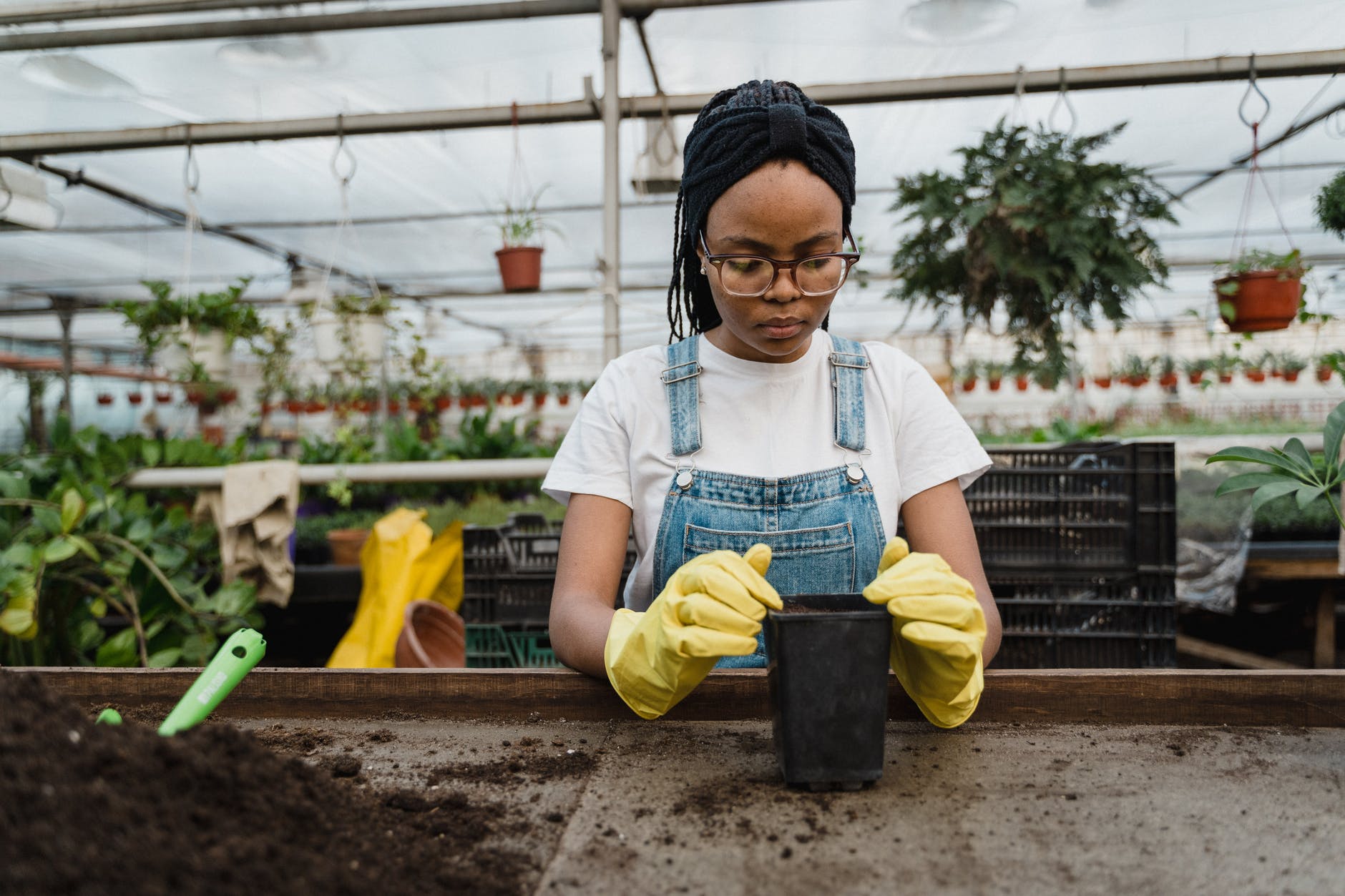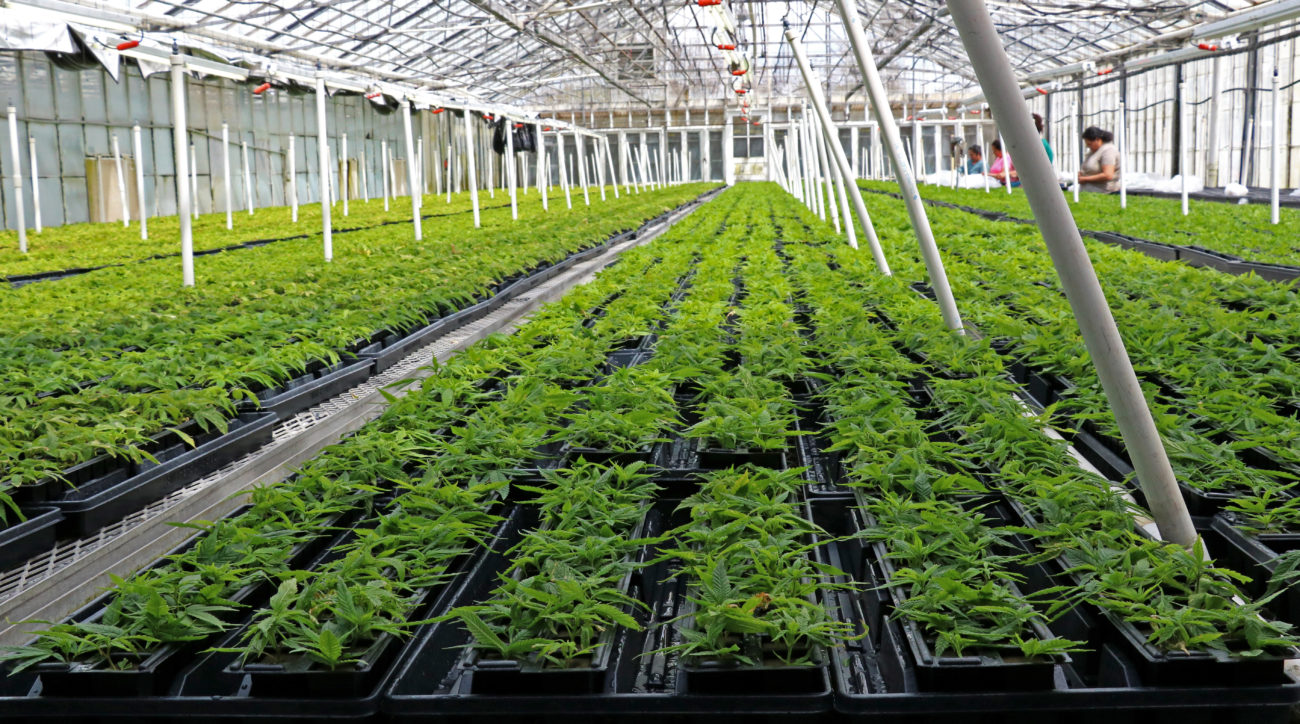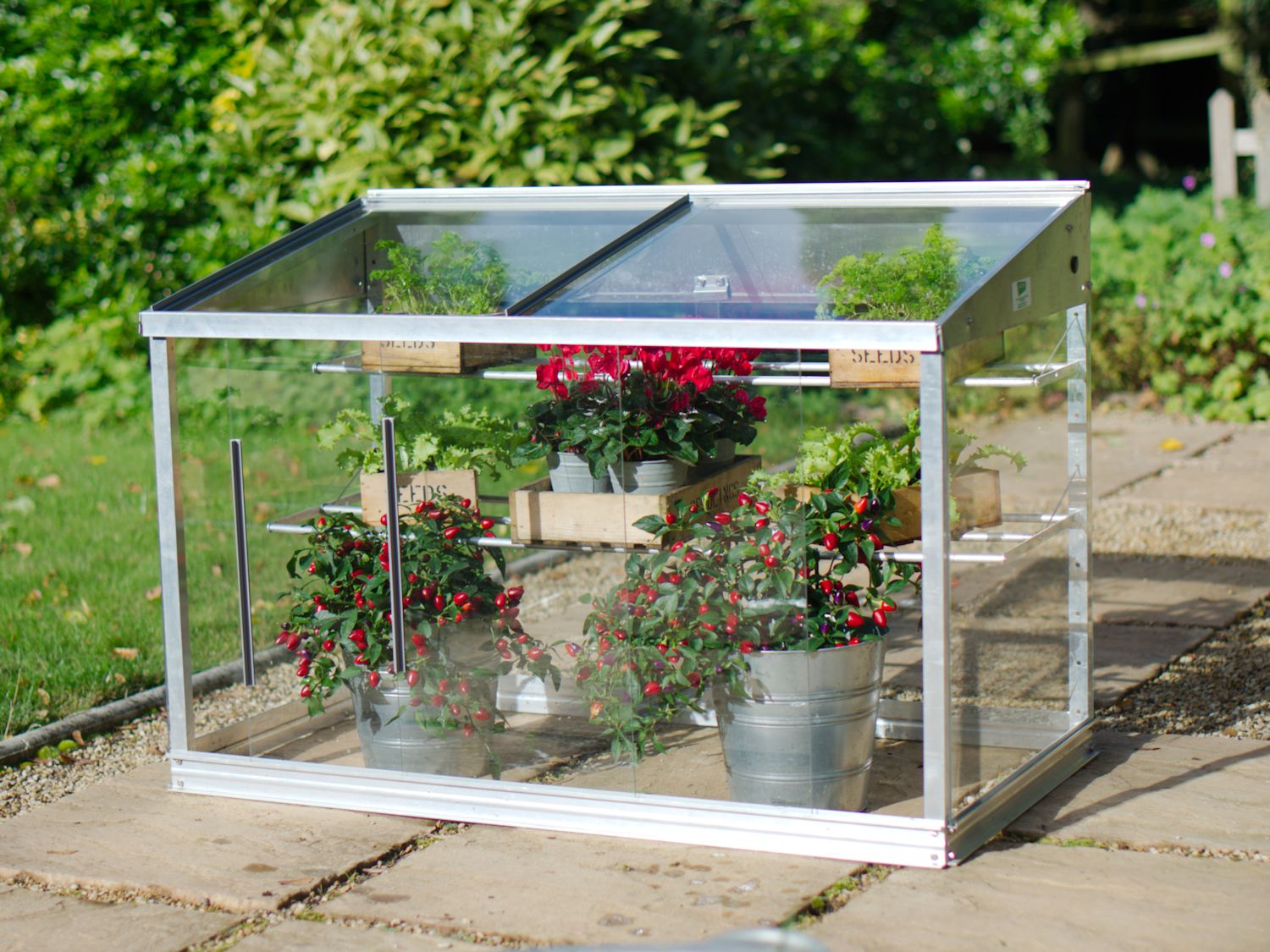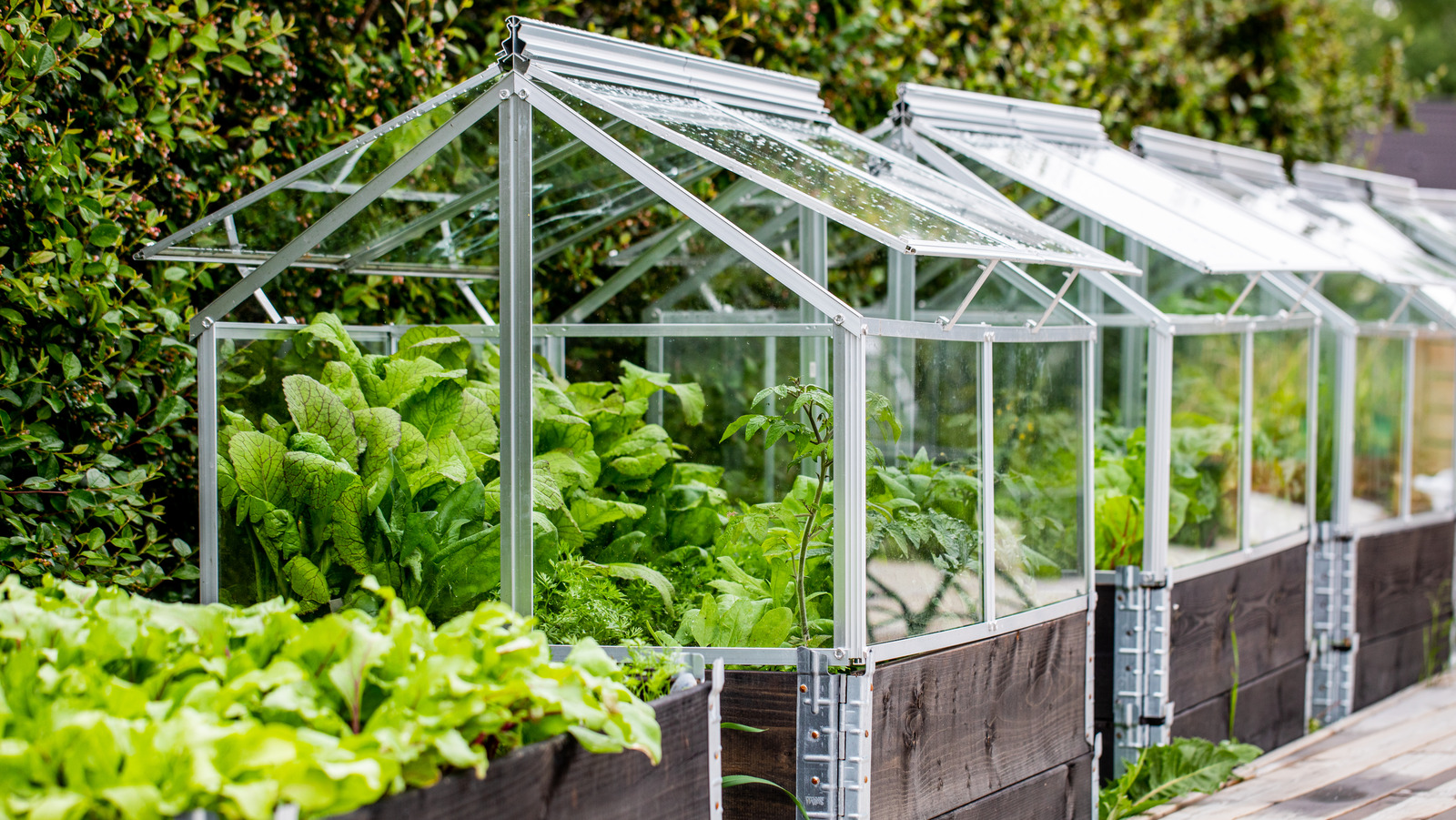Home>Types of Gardening>Edible Gardening>How To Grow Lettuce In Greenhouse
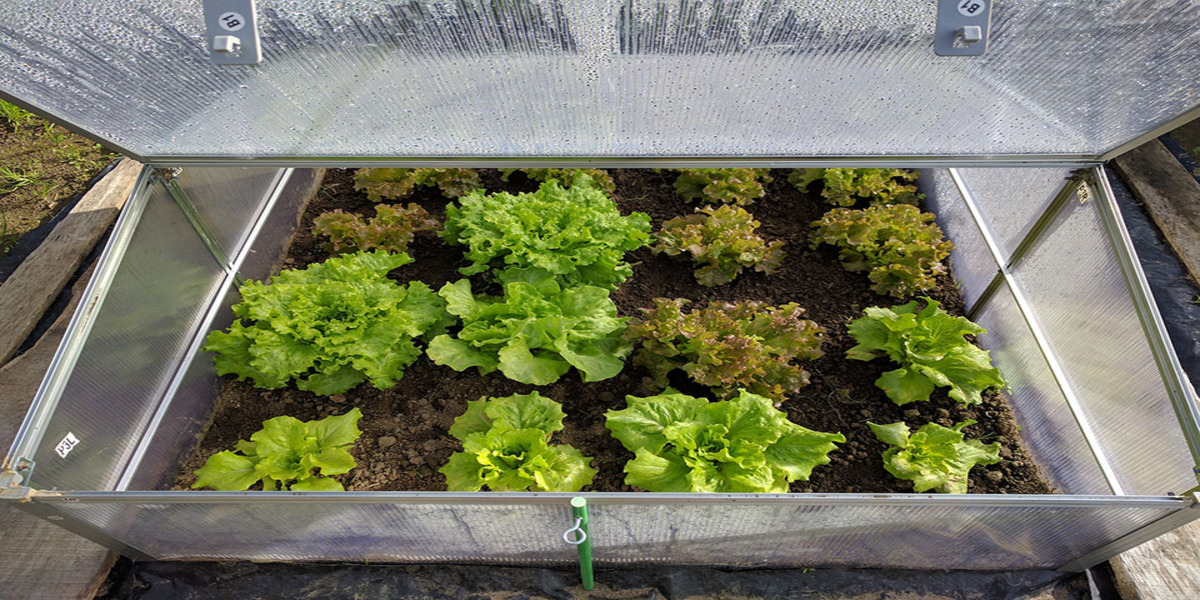

Edible Gardening
How To Grow Lettuce In Greenhouse
Modified: January 22, 2024
Learn how to grow lettuce in a greenhouse and cultivate your own edible garden. Discover tips, techniques, and expert advice for successful lettuce cultivation.
(Many of the links in this article redirect to a specific reviewed product. Your purchase of these products through affiliate links helps to generate commission for Chicagolandgardening.com, at no extra cost. Learn more)
Table of Contents
- Introduction
- Choosing the Right Greenhouse for Lettuce
- Selecting Lettuce Varieties
- Preparing the Greenhouse for Lettuce
- Planting Lettuce Seeds or Transplants
- Providing Proper Lighting and Temperature
- Watering and Fertilizing Lettuce Plants
- Controlling Pests and Diseases
- Harvesting and Maintaining Lettuce in the Greenhouse
- Conclusion
Introduction
Welcome to the exciting world of edible gardening! Growing your own food can be a rewarding and fulfilling experience, and one popular option for home gardeners is growing lettuce in a greenhouse. Lettuce is a versatile and delicious leafy green that can be enjoyed in salads, sandwiches, and even cooked dishes. With a greenhouse, you can extend the growing season and have fresh, crisp lettuce all year round.
But where do you start? In this article, we will guide you through the process of growing lettuce in a greenhouse. We will cover everything from choosing the right greenhouse and selecting lettuce varieties to planting, providing the proper lighting and temperature, watering and fertilizing, pest and disease control, and harvesting and maintenance.
Before we dive into the details, it’s important to understand why a greenhouse is an ideal environment for growing lettuce. A greenhouse offers protection from harsh weather conditions and allows you to control important factors like temperature, humidity, and sunlight. This control enables faster growth and higher yields compared to traditional outdoor gardening.
Additionally, lettuce thrives in cooler temperatures, making it a perfect choice for greenhouse cultivation. The controlled environment helps regulate the temperature, preventing lettuce from bolting (prematurely flowering and producing bitter leaves).
Now that you have a better understanding of the benefits of growing lettuce in a greenhouse, let’s explore the steps involved in creating your own thriving lettuce garden. Remember, growing lettuce in a greenhouse requires careful planning and attention, but with the right knowledge and techniques, you’ll be on your way to enjoying freshly harvested greens in no time.
Choosing the Right Greenhouse for Lettuce
When it comes to growing lettuce in a greenhouse, choosing the right structure is essential. There are several factors to consider, including size, material, and design, to create an optimal environment for your lettuce plants.
Size is an important consideration when selecting a greenhouse. Assess your available space and determine how much lettuce you intend to grow. It’s recommended to choose a greenhouse that provides ample room for your plants to grow and for you to move around comfortably. Remember to consider the height as well to accommodate the lettuce’s growth habit.
Next, consider the material of the greenhouse. Popular options include glass, polycarbonate, and polyethylene. Glass is a traditional choice that offers excellent light transmission but may be more expensive and fragile. Polycarbonate is durable, lightweight, and provides good insulation. Polyethylene is a cost-effective option that provides good light diffusion, but it may require replacement over time due to sunlight degradation.
The design of the greenhouse also plays a significant role in its effectiveness for lettuce cultivation. Consider whether you want a freestanding greenhouse or a lean-to greenhouse attached to a wall. A freestanding greenhouse provides more flexibility in terms of location and orientation, while a lean-to greenhouse can utilize the existing structure for added stability and ease of access.
It’s important to account for ventilation and airflow in the greenhouse design. Lettuce thrives in cool temperatures, and proper air circulation helps prevent disease and reduce the risk of overheating. Look for features like adjustable vents, doors, and fans to ensure adequate ventilation in your greenhouse.
Lastly, consider your local climate and weather conditions. If you live in an area with extreme temperatures or high winds, you may need to choose a greenhouse with additional insulation or reinforced structure to protect your lettuce plants.
Remember to check local building codes and regulations before installing a greenhouse. Some areas may have restrictions on size, location, or construction materials. It’s also a good idea to consult with experienced greenhouse growers or professionals to better understand what greenhouse options are suitable for your specific needs.
By carefully considering the size, material, design, and ventilation of your greenhouse, you can create the ideal environment to grow healthy and productive lettuce plants.
Selecting Lettuce Varieties
When it comes to selecting lettuce varieties for your greenhouse, there are countless options to choose from. Lettuce comes in different shapes, colors, and flavors, allowing you to create a diverse and visually appealing garden. Here are a few factors to consider when choosing your lettuce varieties:
Growing Season: Lettuce varieties are typically classified into two main types: cool season and warm season. Cool season varieties thrive in temperatures between 45-75°F (7-24°C), making them ideal for greenhouse cultivation. They can tolerate lower temperatures and have a shorter maturation period. Warm season varieties are best suited for outdoor gardening as they prefer temperatures above 60°F (15°C).
Growth Habit: Lettuce varieties can be categorized into three main types based on their growth habits: head lettuce, leaf lettuce, and romaine lettuce. Head lettuce forms tight heads and is often crisp and sweet. Leaf lettuce has loose, open leaves and comes in a variety of colors and textures. Romaine lettuce has elongated heads with crunchy leaves. Consider the growth habit that best fits your preferences and gardening style.
Flavor and Texture: Lettuce offers a wide range of flavors, from mild and sweet to tangy and slightly bitter. Consider the taste profile you prefer and select varieties that match your preferences. Texture is another important factor to consider, with options ranging from tender and delicate to crisp and crunchy.
Color and Appearance: Lettuce varieties come in various colors, including shades of green, red, and purple. Some varieties have speckled or variegated leaves, adding visual interest to your greenhouse garden. Consider the aesthetic appeal of different lettuce varieties and choose ones that complement your overall garden design.
Disease Resistance: Different lettuce varieties have varying levels of resistance to common diseases and pests. Research disease-resistant varieties that are known to perform well in your region to minimize the risk of problems in your greenhouse.
It’s also important to consider your personal preferences and culinary needs when selecting lettuce varieties. If you primarily enjoy salads, opt for a mix of leaf lettuce varieties. If you prefer crisp lettuce for sandwiches, choose head lettuce varieties. Experimenting with different varieties allows you to discover your favorites and keeps your lettuce garden interesting.
Remember to check the seed catalogs or visit local nurseries to explore the wide range of lettuce varieties available. Read reviews, consult experts, and ask fellow gardeners for recommendations. By selecting a diverse mix of lettuce varieties, you can enjoy a bountiful harvest and a vibrant greenhouse garden.
Preparing the Greenhouse for Lettuce
Before you start planting lettuce in your greenhouse, it’s essential to prepare the space to ensure optimal growing conditions. Proper preparation will help create a healthy and productive environment for your lettuce plants. Here are the steps to prepare your greenhouse:
Clean and sanitize: Start by cleaning the greenhouse thoroughly. Remove any debris, weeds, or old plant material that may harbor pests or diseases. Disinfect the greenhouse surfaces, including benches, pots, and tools, to minimize the risk of pests and diseases. Use a diluted bleach solution or a commercial greenhouse disinfectant following the manufacturer’s instructions.
Improve the soil: If you’re planting lettuce in containers or raised beds, ensure you have a well-draining and nutrient-rich soil mix. Amend the soil with organic matter like compost or aged manure to improve its fertility and structure. Avoid using heavy clay or compacted soils that can hinder root growth and water drainage. Proper soil preparation provides a good foundation for healthy lettuce plants.
Install shading: Lettuce prefers partial shade and can bolt or develop bitter leaves when exposed to excessive heat and sunlight. Install shading materials like shade cloth or adjustable blinds to reduce the intensity of sunlight in your greenhouse. This will help maintain cooler temperatures and prevent sunburn on the lettuce leaves.
Set up irrigation: Proper watering is crucial for lettuce plants. Install an efficient irrigation system such as drip irrigation or a soaker hose to provide consistent moisture to the plants. Avoid overhead watering, as wet foliage can increase the risk of disease. Monitor the moisture levels in the soil and adjust the irrigation accordingly to prevent over or under-watering.
Create ventilation: Good air circulation is essential for healthy lettuce growth. Install vents, fans, or louvers to promote fresh airflow in the greenhouse. Ventilation helps prevent excessive humidity, reduces the risk of fungal diseases, and ensures proper gas exchange for the plants. Consider using automatic vent openers or fans connected to a thermostat to regulate temperature and airflow.
Organize the space: Plan the layout of your greenhouse to maximize space utilization. Leave enough room for walking and working between the rows or beds. Consider using trellises or vertical gardening techniques to make the most of the vertical space. Group plants with similar water and light requirements together for efficient care and maintenance.
Monitor temperature and humidity: Install a thermometer and a hygrometer inside the greenhouse to monitor the temperature and humidity levels regularly. Lettuce grows best in a temperature range between 45-75°F (7-24°C) and requires moderate humidity levels. Maintain optimal conditions by adjusting the ventilation, shading, and watering accordingly.
By taking the time to properly prepare your greenhouse, you create a favorable environment for your lettuce plants. This sets the stage for successful and abundant growth, allowing you to enjoy a continuous supply of fresh and delicious lettuce from your greenhouse garden.
Planting Lettuce Seeds or Transplants
Planting lettuce in your greenhouse can be done using either seeds or transplants. Both options have their advantages, and the choice will depend on your preference, time, and available resources. Here are the steps to successfully plant lettuce in your greenhouse:
Seeds:
1. Choose high-quality lettuce seeds from reputable suppliers. Look for varieties that are well-suited for greenhouse cultivation and meet your desired flavor, color, and texture preferences.
2. Fill seed trays or small pots with a sterile seed starting mix. Moisten the mix before planting the seeds to ensure good contact between the seeds and the growing medium.
3. Sow the lettuce seeds according to the recommended spacing indicated on the seed packet. Lightly press the seeds into the soil and cover them with a thin layer of vermiculite or fine compost.
4. Place the seed trays or pots in a warm location with indirect sunlight or under grow lights. Maintain a temperature between 60-70°F (15-21°C) to promote germination. Avoid direct sunlight as it may dry out the soil quickly.
5. Keep the soil consistently moist but not soggy. Water gently with a spray bottle or a watering can with a fine nozzle to avoid disturbing the seeds.
6. As the seedlings emerge, provide adequate light for proper growth. If using grow lights, position them about 6-8 inches above the seedlings and adjust the height as they grow.
7. When the lettuce seedlings have developed a few true leaves, transplant them into larger pots or directly into the greenhouse soil. Space the transplants according to the recommended spacing for the specific lettuce variety.
8. Harden off the seedlings by gradually exposing them to outdoor conditions for a few hours each day, increasing the duration over the course of a week. This helps acclimate the seedlings to the greenhouse environment.
9. Once the seedlings are hardened off and the greenhouse soil is prepared, gently transplant them into the prepared soil, ensuring the root system is well-covered and supported. Water thoroughly after transplantation.
Transplants:
1. Purchase healthy lettuce transplants from a reputable nursery or start your own transplants indoors.
2. Prepare the greenhouse soil by amending it with organic matter and ensuring proper drainage.
3. Dig planting holes at the recommended spacing for the lettuce variety and gently remove the transplants from their containers.
4. Place each transplant in a planting hole, making sure the root system is well-covered with soil. Firmly press the soil around the base of the transplant to eliminate any air pockets.
5. Water the transplants immediately after planting to ensure proper hydration and root establishment.
6. Provide proper light and temperature conditions for the transplants in the greenhouse. Maintain a temperature range between 45-75°F (7-24°C) for optimal growth.
7. Monitor the moisture levels in the soil and water as needed to keep the soil consistently moist but not waterlogged.
8. Regularly thin overcrowded plants, removing the weakest ones to allow adequate space for the remaining lettuce plants to grow and develop properly.
By following these steps, you can successfully plant lettuce seeds or transplants in your greenhouse. Whether you choose to start from seeds or use transplants, ensure that you provide the necessary care and attention to your lettuce plants as they grow, setting the stage for a bountiful harvest.
Providing Proper Lighting and Temperature
Proper lighting and temperature are crucial factors for the successful growth of lettuce in a greenhouse. Lettuce requires the right balance of light and temperature to thrive and produce an abundant harvest. Here are some important considerations to ensure optimal conditions:
Lighting:
Lettuce plants require adequate light to grow and reach their full potential. In a greenhouse, there are several ways to provide the right amount of light:
- Natural sunlight: Position your greenhouse in a location that receives the maximum amount of sunlight, preferably facing south or southeast. This will ensure that your lettuce plants receive at least 6-8 hours of direct sunlight each day.
- Supplementary lighting: In regions with limited sunlight or during the winter months, supplementing natural light with grow lights can help ensure consistent and sufficient light for your lettuce plants. Use fluorescent or LED grow lights that emit a full spectrum of light, including blue and red for optimal growth.
- Light duration: Lettuce plants generally require 12-16 hours of light per day for proper growth and development. Use a timer to maintain a consistent light schedule and mimic natural sunlight patterns.
- Avoid overheating: While lettuce thrives in cool temperatures, excessive heat can cause the plants to bolt and produce bitter leaves. To prevent overheating, provide adequate shading during the hottest parts of the day or install ventilation systems to dissipate excess heat.
Temperature:
Maintaining the right temperature range is vital for lettuce growth. Here are some temperature guidelines for optimal production:
- Daytime temperatures: Lettuce grows best in temperatures between 60-70°F (15-21°C). Ensure that the greenhouse remains within this range during the day to promote healthy leaf development.
- Nighttime temperatures: Lower the temperature slightly at night to mimic a natural temperature drop. Aim for nighttime temperatures between 45-55°F (7-13°C), which encourages the lettuce plants to stay compact and prevents bolting.
- Temperature fluctuations: Avoid extreme temperature fluctuations inside the greenhouse as they can stress the plants. Insulate the greenhouse properly to maintain a stable temperature and protect the lettuce plants from drastic changes.
- Thermal mass: Utilize thermal mass materials like water barrels or bricks to store heat during the day and release it during colder periods. This helps create a more stable and uniform temperature inside the greenhouse.
- Air circulation: Proper airflow and ventilation are essential to prevent heat buildup and maintain a consistent temperature. Use fans or vents to ensure good air circulation and regulate the greenhouse’s temperature.
By providing the proper lighting and maintaining the ideal temperature range in your greenhouse, you can create an optimal environment for healthy lettuce growth. Remember to monitor the conditions regularly, make adjustments as needed, and provide the necessary care to support your lettuce plants throughout their growth cycle.
Watering and Fertilizing Lettuce Plants
Proper watering and fertilizing are key factors in ensuring the healthy growth and productivity of lettuce plants in a greenhouse. Lettuce requires consistent moisture and adequate nutrients to develop crisp, flavorful leaves. Here are some guidelines for watering and fertilizing your lettuce plants:
Watering:
- Consistent Moisture: Lettuce plants thrive in evenly moist soil. Monitor the moisture levels regularly and aim to keep the soil consistently moist, but not waterlogged. Overly dry conditions can lead to stunted growth and bitter-tasting leaves, while excessive moisture can increase the risk of fungal diseases.
- Watering Technique: Use a gentle watering method, such as a watering can with a fine nozzle or a drip irrigation system, to avoid disturbing the soil or damaging the delicate lettuce leaves. Water the plants at the base, directly onto the soil, rather than overhead, to prevent wetting the foliage, which can lead to diseases.
- Watering Frequency: The frequency of watering will depend on factors such as temperature, humidity, and the moisture retention capabilities of the soil. Water the lettuce plants thoroughly whenever the top inch of soil feels slightly dry to the touch. The goal is to provide sufficient moisture without allowing the soil to become waterlogged.
- Deep Watering: When you water, ensure that the moisture penetrates deeply into the root zone. This encourages the lettuce roots to grow deeper and develop a stronger foundation, making the plants more resilient to fluctuations in moisture levels.
- Early Morning Watering: It’s generally best to water your lettuce plants in the early morning. This allows any excess moisture to evaporate during the day, reducing the risk of diseases and promoting healthier growth.
Fertilizing:
- Preparation: Prior to planting, incorporate organic matter, such as compost or well-rotted manure, into the soil to improve its fertility and nutrient content. This helps provide a good foundation for your lettuce plants.
- Timing: Lettuce plants benefit from regular feeding throughout their growth stages. Start fertilizing about two weeks after planting the transplants or when the seedlings have developed a few true leaves.
- Types of Fertilizers: Use a balanced slow-release fertilizer or an organic fertilizer specifically formulated for vegetable gardens. These will provide a steady supply of essential nutrients without risking over-fertilization.
- Application: Sprinkle the fertilizer around the base of the lettuce plants, following the package instructions for the recommended dosage. Avoid direct contact with the leaves to prevent potential burning or damage.
- Frequency: Fertilize your lettuce plants every 2-3 weeks during the growing season. Adjust the frequency based on the specific fertilizer’s instructions and the overall health and vigor of the plants.
- Monitor Nutrient Levels: Keep an eye on the appearance of your lettuce plants. If leaves are pale or showing signs of nutrient deficiency, such as yellowing or stunted growth, consider providing additional fertilization or adjusting the nutrient balance in the soil.
Remember, each greenhouse environment and lettuce variety may have slightly different watering and fertilization needs. It’s important to observe the specific conditions of your greenhouse and the responses of your lettuce plants to determine the best watering and fertilizing routine for optimal growth and productivity.
Controlling Pests and Diseases
Pests and diseases can pose a threat to the health and productivity of lettuce plants in a greenhouse. Being proactive in monitoring and controlling these issues is crucial for successful cultivation. Here are some essential tips for preventing and managing pests and diseases in your lettuce greenhouse:
Pest Control:
- Regular Inspection: Conduct frequent inspections of your lettuce plants to identify any early signs of pest infestations. Inspect the foliage, stems, and undersides of the leaves for pests such as aphids, slugs, snails, caterpillars, or mites.
- Biological Controls: Implement natural or biological control methods to manage pests. This includes introducing beneficial insects like ladybugs or lacewings that feed on aphids, or using nematodes to combat soil-dwelling pests.
- Physical Barriers: Install physical barriers like insect netting or row covers to prevent pests from accessing your lettuce plants. These barriers can also protect the plants from flying insects that may transmit diseases.
- Companion Planting: Utilize companion planting by intercropping lettuce with pest-repellent plants. Some effective companion plants include marigolds, garlic, and chives, as their strong scents can deter common pests.
- Organic Pest Control: If necessary, use organic insecticides or pesticides as a last resort. Look for products that are specifically formulated for controlling pests on vegetables, and always follow the instructions on the label.
Disease Management:
- Cleanliness and Sanitation: Maintain a clean and tidy greenhouse environment by removing any fallen leaves or plant debris regularly. This helps eliminate potential breeding grounds for diseases.
- Proper Ventilation: Ensure good air circulation and proper ventilation in the greenhouse. This reduces humidity levels and prevents the development and spread of fungal diseases. Use fans, vents, or exhaust systems to promote airflow.
- Irrigation Management: Avoid over-watering and ensure proper drainage. Excessive moisture can lead to fungal diseases such as powdery mildew or damping-off. Water at the base of the plant and avoid wetting the foliage, which can encourage disease development.
- Seed and Transplant Treatment: Treat seeds or transplants with a recommended fungicide to prevent seed-borne or transplant-related diseases. Follow the instructions on the packaging for appropriate application and timing.
- Crop Rotation: Practice crop rotation by avoiding planting lettuce in the same location for consecutive seasons. This helps prevent the buildup of soil-borne diseases and pests specific to lettuce.
Monitoring and Early Intervention:
- Regular Observation: Keep a close eye on your lettuce plants for any signs of pests or diseases. Early detection and intervention can help prevent the problem from spreading and potentially save the affected plants.
- Isolation of Infected Plants: If you discover any infected plants, isolate them from the healthy ones immediately to prevent the spread of diseases.
- Consultation: If you are unsure about the nature of a pest or disease problem, consult with local gardening experts, extension agents, or fellow gardeners. They can offer guidance and specific recommendations for your region.
By implementing these pest and disease control strategies and keeping a vigilant eye on your lettuce plants, you can minimize the impact of pests and diseases and ensure a healthy and thriving lettuce crop in your greenhouse.
Harvesting and Maintaining Lettuce in the Greenhouse
Harvesting lettuce from your greenhouse is a rewarding culmination of your hard work and patience. Lettuce leaves are at their peak flavor and texture when harvested at the right time. Here are some tips on harvesting and maintaining lettuce in your greenhouse:
Harvesting:
- Leaf Lettuce: Leaf lettuce can be harvested at any stage of growth. For baby greens, harvest as soon as the leaves reach a size you desire. For larger leaves, cut them individually or remove outer leaves, allowing inner leaves to continue growing.
- Head Lettuce: Head lettuce is harvested when the heads are firm and tightly packed. Gently press the head to check for solidity. Use a sharp knife to cut the lettuce off near the base of the plant.
- Romaine Lettuce: Romaine lettuce forms elongated heads. Harvest when the heads are fully developed, and the leaves feel crisp and firm. Cut the entire head or pick outer leaves while leaving the inner leaves to continue growing.
- Continuous Harvest: To enjoy a prolonged harvest, practice cut-and-come-again harvesting. Snip outer leaves or harvest individual leaves as needed, allowing the center of the lettuce plant to keep producing more leaves.
- Timing: Harvest lettuce in the early morning when temperatures are cooler, as lettuce leaves tend to be crisper then. Avoid harvesting during the hottest part of the day to prevent wilting.
Maintaining Lettuce Plants:
- Watering: Continue to water your lettuce plants as needed, keeping the soil evenly moist. Maintain a balance between avoiding over-watering and preventing the soil from drying out. Adequate moisture is important for healthy lettuce growth.
- Weeding: Regularly remove weeds from around your lettuce plants to reduce competition for nutrients and to prevent pests from hiding and feeding on your plants.
- Pest and Disease Management: Monitor your lettuce plants for any signs of pests or diseases. Immediately address any issues by employing appropriate control measures, such as biological controls or organic treatments, to prevent the problem from escalating and damaging your lettuce crop.
- Fertilizing: Continue to feed your lettuce plants with a balanced fertilizer according to package instructions. Regular fertilization helps ensure the plants receive the necessary nutrients for healthy growth and optimal production.
- Temperature and Ventilation: Regulate the temperature and maintain proper ventilation in your greenhouse. This ensures that your lettuce plants remain in the optimal temperature range and have good airflow to prevent heat stress and the development of diseases.
By regularly harvesting mature leaves and properly maintaining your lettuce plants, you can enjoy a continuous supply of fresh, flavorful lettuce from your greenhouse. Remember to observe good gardening practices and address any issues promptly to ensure the long-term success of your lettuce crops.
Conclusion
Congratulations on your journey into growing lettuce in a greenhouse! With the right knowledge and techniques, you can create a thriving edible garden and enjoy a year-round supply of fresh, crisp lettuce. Throughout this article, we have explored the essential steps involved in successfully growing lettuce in a greenhouse, including choosing the right structure, selecting lettuce varieties, preparing the greenhouse, planting seeds or transplants, providing proper lighting and temperature, watering and fertilizing, controlling pests and diseases, and harvesting and maintaining lettuce.
By carefully selecting the right greenhouse, you create an optimal environment for your lettuce plants to thrive. Consider factors such as size, material, design, and ventilation to create the ideal growing conditions. Selecting appropriate lettuce varieties ensures a diverse and flavorful crop, and proper preparation of the greenhouse sets the foundation for healthy growth.
Whether you choose to sow lettuce seeds or use transplants, providing the right lighting and temperature conditions is critical for optimal growth. Adequate water, proper fertilization, and proactive pest and disease management are vital in maintaining healthy lettuce plants throughout their growth cycle. Lastly, harvesting your lettuce at the right stages and properly maintaining the plants will ensure a continuous supply of fresh, delicious lettuce from your greenhouse.
Remember, every greenhouse environment is unique, and it may require some adjustments and experimentation to find the best practices for your specific conditions. Stay observant, learn from your experiences, and don’t be afraid to seek advice from local experts or fellow gardeners.
Growing lettuce in a greenhouse is a rewarding endeavor that allows you to enjoy the fruits of your labor and savor the satisfaction of homegrown produce. So, roll up your sleeves, put on your gardening gloves, and embark on this exciting edible gardening journey. With patience, care, and a little bit of green thumb, you’ll be amazed by the abundance of fresh, vibrant lettuce leaves that will grace your table throughout the year.

